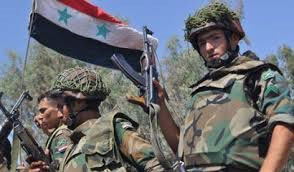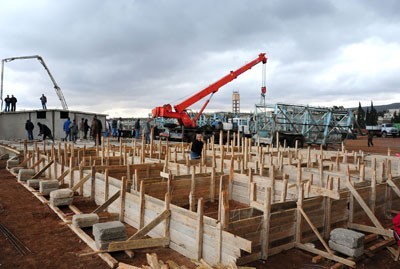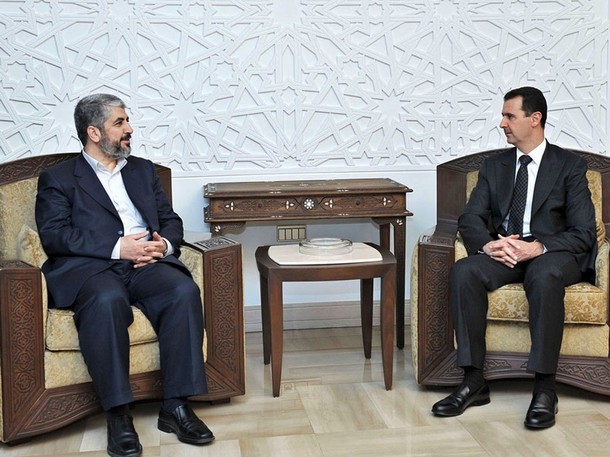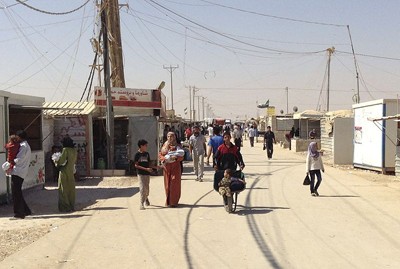The Final Decisive Hours in Yabroud

 A new strategic victory was achieved by the Syrian army in its battle against the so-called “Islamic State of Iraq and the Levant” [ISIL] and the other armed groups- this time, in Yabroud, in the Qalamoun outskirts of Damascus.
A new strategic victory was achieved by the Syrian army in its battle against the so-called “Islamic State of Iraq and the Levant” [ISIL] and the other armed groups- this time, in Yabroud, in the Qalamoun outskirts of Damascus.
“The mother of battles,” as the armed groups called it, was settled in favor of the Syrian army. It is Yabroud- the insurgents’ stronghold and their strategic reservoir in Qalamoun’s most heavily guarded mountains.
yabroud These mountains formed the strategic depth for the armed groups inside East Ghouta in addition to the areas of East Homs outskirts, and in the barrens of Rankous, Talfita, Assal al-Ward, and Housh-Arab along the Qalamoun mountains.
The military control of the hills surrounding the city of Yabroud facilitated the task of the Syrian army in that region, which was within a deliberate strategy based on the operational leadership’s full knowledge of the natural, geographical landscape of the area.
Following the blockade of Yabroud from several directions and the storming of the Eastern district, nothing was left before the intrusive groups in the Syrian army but the Maroun hill.
So, military efforts were focused on regaining control over it, based on the fact that that hill- which lies on the western side of the city directly overlooks the city’s neighborhoods, separating Flita from Yabroud.
Mar-Maroun hill is considered the highest peak in Yabroud’s surroundings, where the insurgents fired sophisticated, anti-missile shields designed to impede the progress of the Syrian army, particularly near the communications tower within it.
In view of the hill on the southern axis of Yabroud city where the armed groups were stationed lies its importance for being a vital crossing for the armed groups fleeing toward the town of Rankous and Assal, in addition to Flita. After the control of the Syrian army over it, the militants were quick to make a remarkable escape under the cover of darkness, and randomly about to different areas including Flita, the Lebanese Aarsal, Ain-Jawza, and the barrens of Tfail and Brital, in addition to barrens and the plain of Rakous.
The arrival of the Syrian army soldiers to the communications tower at the highest peak of Maroun made the town of Flita, by virtue, fall under military control. Now, the road from it to the city of Yabroud was controlled by firearms, which meant cutting supply routes permanently to the city of Yabroud at the same time that intrusions were being carried out to revive the city in an orderly manner.
After the forces were deployed to the required places with high coordination alongside the units backing fire- which were going as planned after targeting all centers, warehouses and militant gatherings inside the town’s neighborhoods- and before dawn, the armed groups had fled from most of them, leaving behind a large number of explosive devices and weapons in addition to more than one field hospital.
The battle of Yabroud is considered by military experts to be similar to the battle of al-Qseir, and the military achievement will have an impact on the conduct of military operations in various areas. It will gain full control over the areas of Qalamoun more easily after its main supply routes were cut off from Yabroud to the eastern mountain chains and Qalamoun, in addition to Al-Naimat all the way down to al-Qseir.
Also, this region is geographically connected with each other, whereby the Syrian army focused a strong defense line along those borders, which meant that the armed groups had become the ‘jaws of the pliers.’ That meant that the depth of the capital, Damascus, was safe from the infiltration of armed groups from the Lebanese border, particularly after the closure of the axis of Yabroud which had been preceded by the closure of illegal crossings from Josiya and Al-Naimat.
At the same time, this achievement will be contributing to a certain degree to lessening the entry of explosive cars to the depth of the Lebanese town across Aarsal in the Bekaa Valley, which were being prepared in Yabroud.
The significant strategic achievement by the Syrian army is not limited to those geographical spots, but it goes beyond that geopolitically until reaching occupied Palestine. Following the entry of the occupying “Israeli” entity to the line of this battle, and after the bombing of the Lebanese Bekaa region to ease military pressure on the area of Yabroud, this is a clear indication of the significance of the region. It confirms that an excruciating intelligence and military war was taking place on the ground in Yabroud, and that a tough battle was raging between the Syrian army and the resistance on the one hand, and the “Israeli” entity on the other hand..
The words of “Israeli” Prime Minister, Benjamin Netanyahu, attest to that following the raids, whereby he said that, “‘Israel’ will do what is necessary to protect its security,” which thus explains the importance of the outcome of the battle in Yabroud.




